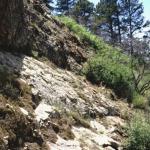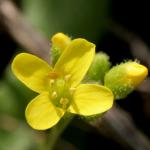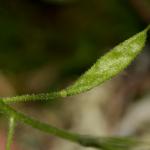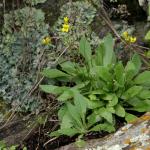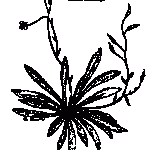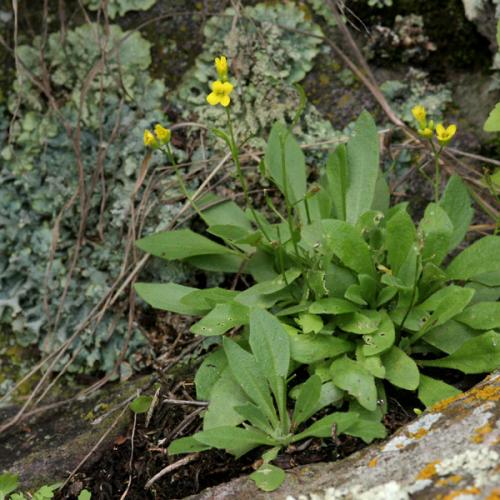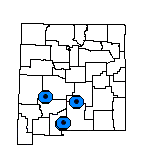Draba standleyi (Standley's Whitlow-Grass)
| USFWS | State of NM | USFS | BLM | Navajo Nation | State Rank | Global Rank | R-E-D Code | NMRPTC Status | Strategy Status |
|---|---|---|---|---|---|---|---|---|---|
| S2 | G2G3 | 2-1-2 | R | SS |
| Overall Conservation Status | Documented Threats | Actions Needed |
|---|---|---|
| UNDER CONSERVED | Fire & fire suppression |
document rarity |
|
Draba |
LONGEVITY |
CROWN/STEM |
STEM TRICHOMES |
BASAL LEAVES |
CAULINE LEAVES |
FRUITING PEDICELS |
STYLES |
|
mogollonica |
annual/ biennial |
tap rooted; no marcescent leaf bases |
simple below; glabrous above |
flat rosette; 4-9 cm long |
1-3, reduced |
widely spreading, 1-2 cm long |
1-2.25 mm |
|
petrophila |
perennial |
marcescent leaf bases; stems relatively stout |
cruciform to dendritic |
numerous; 3-8 cm long |
3-30, usually overlapping |
4-12 mm |
1.5-3 mm |
|
standleyi |
perennial |
marcescent leaf bases; stems very slender |
simple or forked & glabrous above or all glabrous |
tufted; 1.5-8 cm long |
1-8, reduced, remote |
erect to divaricately spreading, 8-13 mm |
1-2 mm |
MacBride, J.F. and E.B. Payson. 1918. Annals of the Missouri Botanical Garden 5:150.
Rollins, R.C. 1993. The Cruciferae of continental North America. Stanford University Press, Stanford, California.
Wooton, E.O. and P.C. Standley. 1913. Descriptions of new plants preliminary to a report upon the flora of New Mexico. Contributions from the U.S. National Herbarium 16(4):124. [type description, as Draba gilgiana]
For distribution maps and more information, visit Natural Heritage New Mexico

